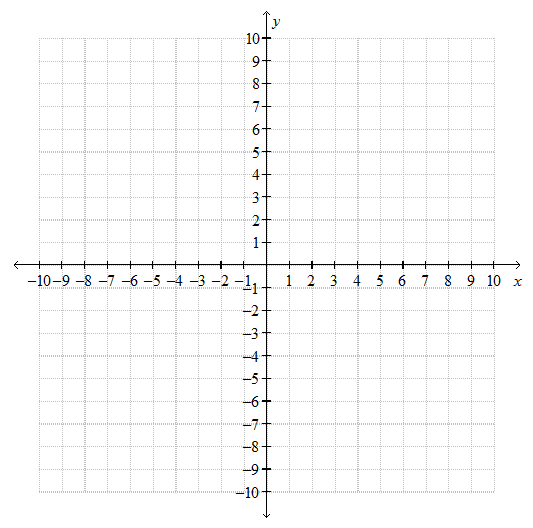
Number plane
Let's look at a number plane

The horizontal axis (line) shows the numbers increasing as we move to the right, or to the east, and decreasing to the left, or to the west, just like on our number line. However, now we have a vertical axis as well. As we move up, or north, along the vertical axis the numbers get bigger or grow, so when we see a positive number, the plus sign is an operator telling us that the number is getting bigger and moving up along the vertical axis.
Conversely, when we see a negative number, the minus sign is an operator telling us that the number is getting smaller and moving down along the vertical axis.
Labelling the Quadrants
The number plane is split in to four areas, known as quadrants. The picture below shows how the quadrants are labelled.

Labelling Points on a Number Plane
Coordinates are used to tell us the horizontal and vertical position of a point. The $x$x-coordinate refers to the horizontal position of the point and it is always written first. The $y$y-coordinate refers to the vertical position of the point and is always written second.
The point $\left(0,0\right)$(0,0) is where the two axes cross and is called the origin.
Examples
Example 1
If we had to plot the point $\left(-3,-4\right)$(−3,−4) on a number plane, we would start at the origin, move $3$3 places to the left and then $4$4 places down.
Example 2
If we had to plot the point $\left(8,6\right)$(8,6) on a number plane, we would start at the origin, move $8$8 places to the right and then $6$6 places up.
Example 3
Find the points that have the given coordinates.
a) $\left(2,2\right)$(2,2)
b) $\left(2,-9\right)$(2,−9)
c) $\left(-5,8\right)$(−5,8)
Play with the applet below to practice labelling points on a number plane.
Finding the Distance Between Points
To find the horizontal or vertical distance between points that are on a horizontal or a vertical line, you can count the spaces across or up between the points.
Examples
question 1
Find the distance between $\left(-8,0\right)$(−8,0) and $\left(-8,-4\right)$(−8,−4).
Question 2
Evaluate: Find the distance between $A$A:$\left(5,2\right)$(5,2) and $B$B:$\left(5,8\right)$(5,8).
Think: The $x$x-coordinates are the same so point $B$B is directly above point $A$A.
Do: $8-2=6$8−2=6 so the distance between these points is $6$6 units.
Let's look at another example.
question 3
Evaluate: Find the distance between $A$A:$\left(-2,6\right)$(−2,6) and $B$B:$\left(10,6\right)$(10,6).
Think: The $y$y-coordinates are the same so $A$A and $B$B are on a horizontal line.
Do: The distance between $-2$−2 and $10$10 is $12$12 units.